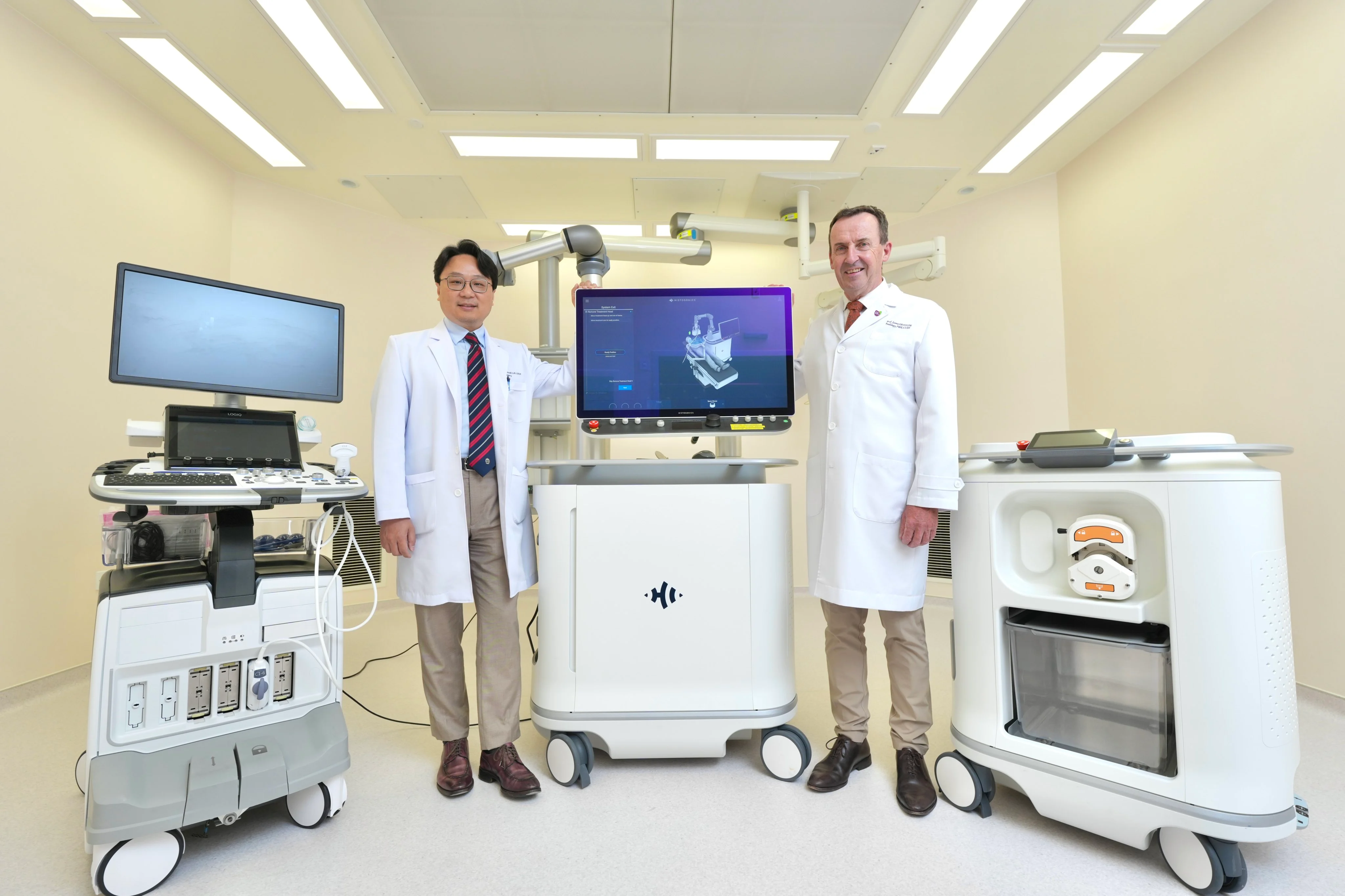Copyright scmp

Hong Kong liver cancer patient Mr Chan* said his tumour disappeared following a painless ultrasound treatment that felt similar to “taking a nap”. The 68-year-old retiree, who had been battling liver cancer since 2013, was among 26 patients who had received a histotripsy treatment conducted by the Chinese University of Hong Kong since April this year. “There was no pain at all. It was just like taking a nap,” Chan said. “I could be discharged the next day and lead a normal life afterwards. The others may not even know I underwent treatment if I did not tell them.” Last year, tycoon Li Ka-shing donated three histotripsy machines, each worth US$3 million, to the medical schools of Chinese University and the University of Hong Kong (HKU), and to the Hong Kong Sanatorium and Hospital. Histotripsy, developed by the University of Michigan, is a non-invasive procedure that uses focused ultrasound waves to disrupt and liquefy liver tumours without the need for surgery or incisions. In the past, Chan had received multiple treatments, including the removal of his right lobe of liver, microwave and radiofrequency ablations – heat-based treatments that used different types of energy to destroy cancer cells. He also tried chemoembolisation, a treatment that involves the direct delivery of anticancer drugs to the tumour and blockage of its blood supply. Chan said he endured different levels of discomfort with those treatments, but they ultimately did not cure him completely as he had a relapse in February, prompting doctors to try histotripsy on him in April. So far, Chinese University has managed to achieve a success rate of more than 96 per cent in treating liver cancer patients with the machine, with Chan among those who benefited. Doctors from the university hope for wider use of the technology in the city and Asia, given a relatively heavy burden of hepatitis, a risk factor for liver cancer. The US Food and Drug Administration approved the use of the machine in October 2023 for treating liver cancer, and Hong Kong was also using the technology for the same type of tumour. Last month, the machine was also included in a government list of approved medical devices, paving the way for potentially wider use in public hospitals. Professor Kenneth Chok Siu-ho, head of the division of hepato-biliary and pancreatic surgery at the university’s department of surgery, said Chan was recommended for histotripsy as he had few options left after trying several types of treatments. “After he had undergone so many types of therapies, we also hoped to offer him a treatment option that was not that painful, with a shorter hospital stay, minimising wounds and complications,” Chok said. “Coincidentally, there is this [histotripsy] technology. If Mr Chan’s case had happened last year, we would not have had any other option.” While the histotripsy procedure lasted around 30 to 45 minutes, the entire process took about two hours after including time for general anaesthesia and intubation. A total of 168 patients in Hong Kong have received the histotripsy treatment so far, according to Professor James Griffith, chairman of the university’s department of imaging and interventional radiology. HKU had the most cases, at 106, while 36 were conducted in the Hong Kong Sanatorium and Hospital. Griffith said 25 of the 26 CUHK patients managed to have their tumours removed, including Chan. “Lesions were completely removed, and no recurrence,” he said. A scan done a day after Chan’s procedure showed that there was a hole in the original tumour location in his liver, and images taken one month and three months later showed that the hole had gradually been filled up by healthy tissue again. “If you can see no evidence of recurrence after three months, then you can say the lesion has been treated,” Griffith said. For now, Chan remains cancer-free, six months after his procedure. While the non-invasive treatment appears to offer hope to patients who are running out of options, doctors have said not everyone is suitable for the therapy, including those with tumours that are larger than 5cm (2 inches) or not clearly seen with an ultrasound. With the government planning to launch hepatitis B screening through an ongoing chronic disease co-care scheme, Chok believes that more early-stage liver cancer patients can be identified and stand to benefit from histotripsy as their tumours are usually smaller. “The use of this device in Asia could be wider, as there are lots of hepatitis patients … and our [smaller] body sizes meant ultrasound could be used more effectively,” Chok said, with Griffith estimating that around 60 per cent of liver cancer patients in Hong Kong might be suitable for histotripsy. He said other places had been conducting clinical trials of histotripsy in treating tumours in areas such as the kidney and pancreas. He said such trials would also be conducted in Hong Kong in the future and potentially treat other areas such as breasts, prostate and musculoskeletal system. *Name changed at interviewee’s request



